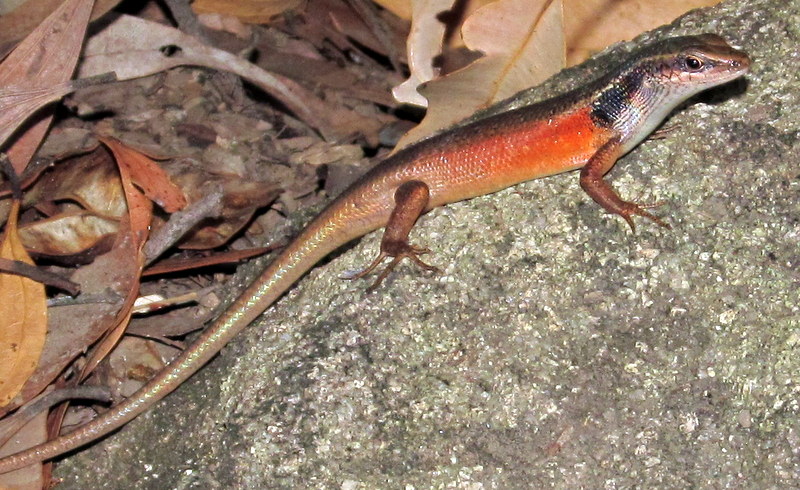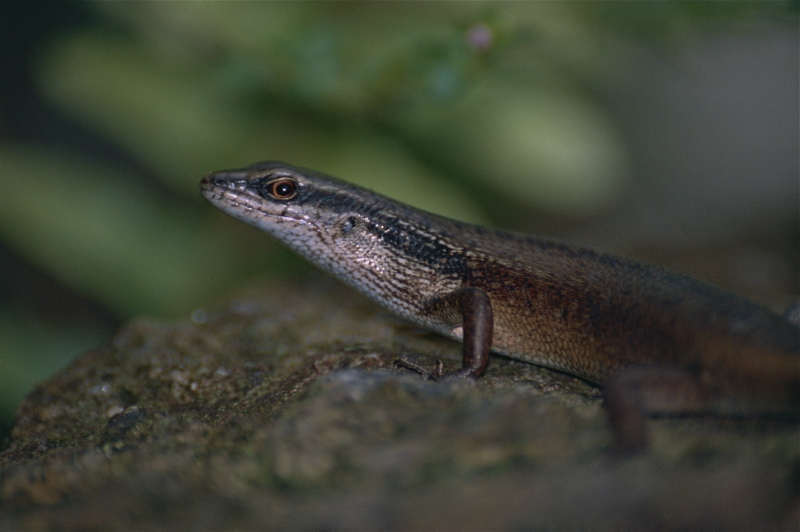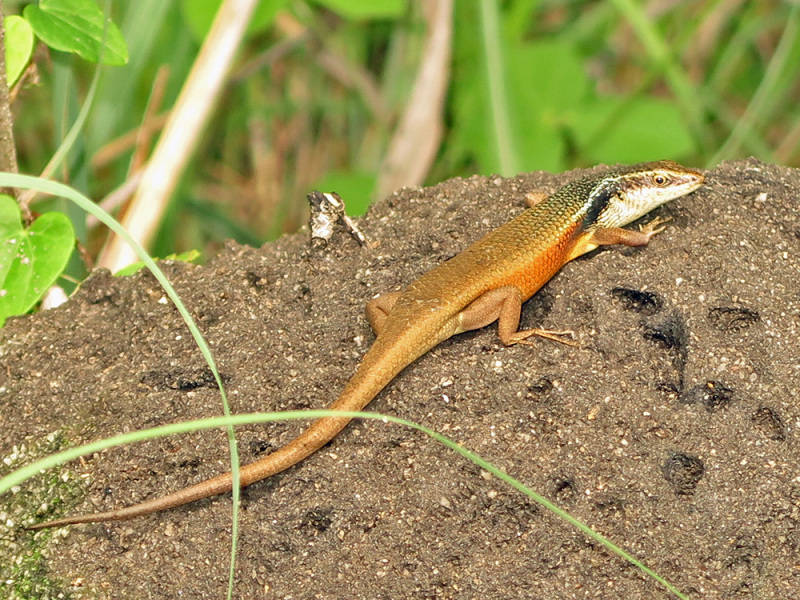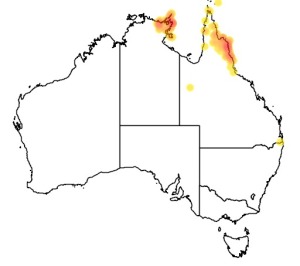�
�
�
���
Carlia longipes
Bronze Carlia
Kingdom
Animalia
Phylum
Chordata
Class
Reptilia
Order
Squamata
Family
Scincidae
Genus
Carlia
Species
Carlia longipes
Status
unspecified
Colours
Distinguishing features
As with other species of Carlia, there are four fingers and five toes. This is a robust species, and is larger than the other species of Carlia reported from the island. Dorsal colouration is a dull brown, and lacks patterning. A prominent dark band extends from the eye to just behind the forelimb in males, forming a stark contrast with the pale whitish-yellow scales of the throat and neck region. When breeding, the lateral portion of the body of males is orange. Dorsal scales in the mid back region have three poorly developed keels (see photo). The ear opening is surrounded by pointed lobules (scales) that are especially prominent anteriorly (see photo).
Size
- Up to 6.6 cm (Snout to vent length)
Synonyms
Similar taxa
-
Animalia:
Indonesian Brown Skink (species: Carlia fusca)
Limpus (1982) recorded Carlia fusca and Carlia dogare at Lizard Island. As at 8 Sep 2019, ALA lists no Australian records for Carlia fusca. Presumably, the record by Limpus relates to Carlia longipes which is known from Lizard Island.
Interesting facts
- When a skink drops its tail and the tail moves wildly about, it is not simply a distraction so the lizard can get away, it is an incredibly complex set of movements including acrobatic flips, jumps and lunges that has evolved so that the tail escapes as well. That way, the lizard will come back and eat its own tail (which stores a lot of fat) and regain the energy lost.
Distribution
Web resources
References
- Wilson, S. and G. Swan (2010). A Complete Guide to Reptiles of Australia: 3rd Edition 558 pp. New Holland Publishers, Australia.




